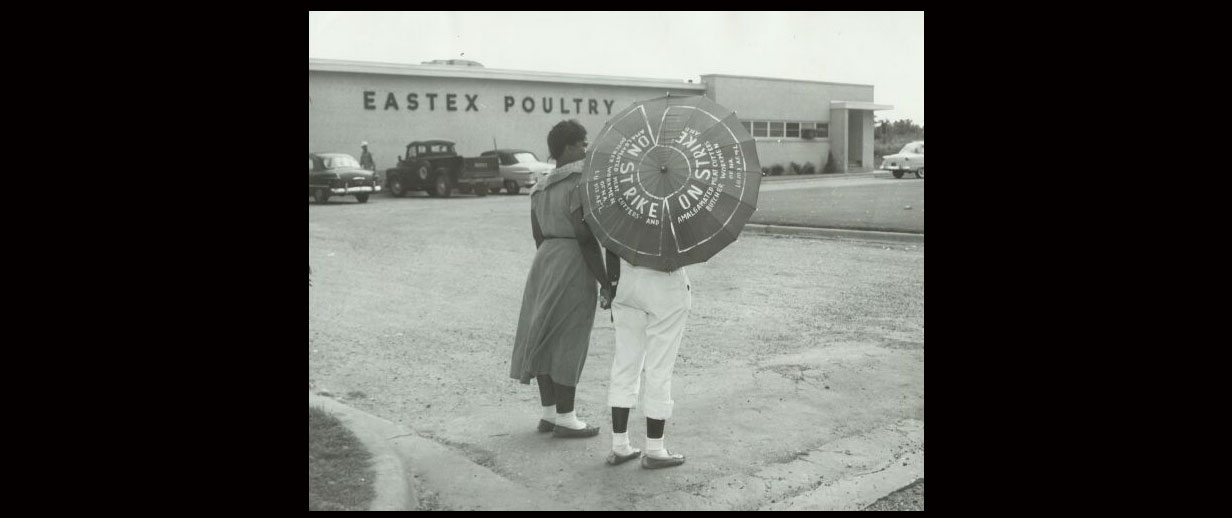How the push for fair treatment in a Texas poultry plan changed the health and safety standards of an industry.
Republished from the United Food and Commercial Workers International Union website.
In 1960, before a wave of automation and rapid restructuring would decimate jobs in the industry, meatpacking wages were 15 percent above the average wage for manufacturing workers in the United States. But one area where change was slow to come was in the poultry industry. Unlike other jobs in meatpacking, a much higher percentage of poultry workers were African American women in the anti-union South.
In 1953, Clara Holder, an East Texas poultry worker, wrote to Patrick Gorman, Secretary Treasurer of the Amalgamated Meat Cutters and Butcher Workman of America (a union that would later merge with the Retail Clerks Union to become the UFCW in 1979). She and her coworkers were fed up with the exploitation and unhealthy practices they witnessed on the job and had decided to form a union to better conditions at the plant.
What followed was a torrent of racially charged violence. When the owners of the poultry plant refused to implement safety procedures, a strike ensued. The president of the local meat cutters union was summoned to the sheriff’s office where he was told “those N****rs are coming off the picket line or they’ll be killed.” Indeed a few nights later there was a bombing. It was only by grace that no one was injured. The black strikers bravely refused to abandon the picket line. Eventually, the plant agreed to the demand for safety procedures.
For those interested in learning more about how black workers brought about greater safety in poultry packing plants, you can read about it in Donald D.Stull and Michael J. Broadway book Slaughterhouse Blues: The Meat and Poultry Industry in North America.










